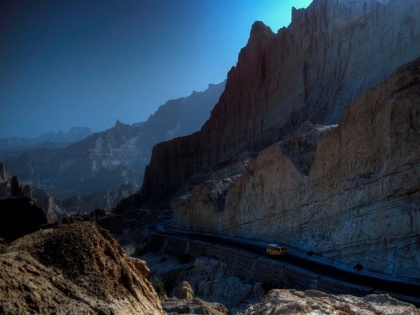Balochistan - A resource rich area facing poverty, dismal growth rate, bad governance
By ANI | Published: May 25, 2021 09:11 AM2021-05-25T09:11:36+5:302021-05-25T09:20:03+5:30
Balochistan, a resource-rich province, has been experiencing a disappointing growth rate, widespread poverty, and bad governance.

Balochistan - A resource rich area facing poverty, dismal growth rate, bad governance
Balochistan, a resource-rich province, has been experiencing a disappointing growth rate, widespread poverty, and bad governance.
Khaleeq Nazar Kiani writing in The Frontier Post said that the challenges in managing natural resources have changed the blessing into a curse in Balochistan.
According to the Geological Survey of Pakistan, Balochistan has more than eighty mineral resources with significant deposits. Some have been discovered, while most remain waiting to be explored.
Natural resources can contribute to economic growth, employment, and fiscal revenue but may also cause controversy if mismanaged by weak institutions. The corruption and weak institutions in any Government are an open invitation for various actors to capture the natural wealth, wrote Kiani.
Balochistan has three large-scale mining projects, Saindak, Dudder, and Reko-diq. The Saindak and Dudder are active projects operated by a Chinese company China Metallurgical Construction Corporation (MCC). Riko-diq project has fallen victim to judicial activism, and Pakistan lost USD 6 billion, reported The Frontier Post.
The Saindak and Dudder mining projects are the joint ventures of MCC and federal Government entities (SML, PMDC). The MCC shares the 50 per cent profit with Saindak Metal Limited, while the same MCC shares the 20 per cent profit with Pakistan Mineral Development Corporation.
The logic of different percentages of shareholding is hard to comprehend. It is guessed that due to the low-profit margin in Dudder, MCC offered a small share percentage in the project. The negotiation of agreement is an art, and the Chinese are master in it, Kiani stated.
Balochistan gets 30 per cent of the profit from the 50 per cent share of the SML plus 5 per cent royalty and CSR. In the Dudder project, the Balochistan Development Authority receives 10 per cent of the profit for maintaining the 100 KM Dudder project road.
However, it has never done repair work. Whatever Balochistan is receiving is peanuts compared to its partners and losing the treasure worth billions of dollars. The Federal Government has earned more than USD 2 billion from the Saindak project as disclosed by Umer Ayub on the floor of the house, reported The Frontier Post.
Saindak and Dudder projects are declared export processing zones and enjoy incentives like freedom of import regulations, duty-free import vehicles, and free to repatriate capital plus profit.
They pay no sales tax, and only 1 per cent presumptive tax is applicable. The Dudder project earned USD 30.894 million from the export in 2019-20, while the Saindak project made USD 55.002 million in 2019-20 as per EPZA.
It was decided in the Aghaz-e Haqooq-e Balochistan that the Saindak project will be transferred to Balochistan. For the last ten years, the issue is lingering due to the Federal Government's reluctance and the indifferent attitude of the ruling elite and provincial bureaucracy, reported Kiani.
After the expiry of the contract period in 2017, they allowed two-time extension till 2022. In candid and straightforward words, it is a betrayal with the people of Balochistan. Can any responsible person from the Government have the guts to tell the people of Balochistan that why concrete steps have not been taken to transfer the project and What SML is doing extra, which the provincial company cannot do?, questioned Kiani.
The existing regulatory framework of the mining sector is so shabby that there are no adequate checks and balances on the working of big companies. In 2019, a mineral policy was launched but is still waiting for on-ground implementation, reported The Frontier Post.
The policy requires competitive bidding, environment impact assessment, resource mapping, availability of geological data, and maintaining the record in the geo-data center. There is no action on these matters.
The east ore body in the Saindak allotted to the Chinese company without competitive bidding is a question mark on the transparency envisioned in the policy. Dudder and Saindak projects have no environmental impact assessment, which is alarming.
Recently, the Kyrgyzstan Government took control of the Kumtor mine and imposed a three billion dollars fine on the Centerra company (a Canadian-based company) over safety record, waste management, and environmental damages. It is a lesson for the scared Balochistan Government.
Balochistan is a water-scarce province, and whatever aquifer is available is extensively used by the company without paying a single paisa. Resource mapping is still a dream, and the functionality of the geo-data center can be seen by visiting the website, which the Chief Minister inaugurated in 2019 with high hopes.
The National Council for Human rights has investigated the Thar Coal projects and about the rights of the people. It prepared a comprehensive report. Such a type of probe is also required in Saindak and Dudder projects, wrote Kiani.
( With inputs from ANI )
Disclaimer: This post has been auto-published from an agency feed without any modifications to the text and has not been reviewed by an editor
Open in app